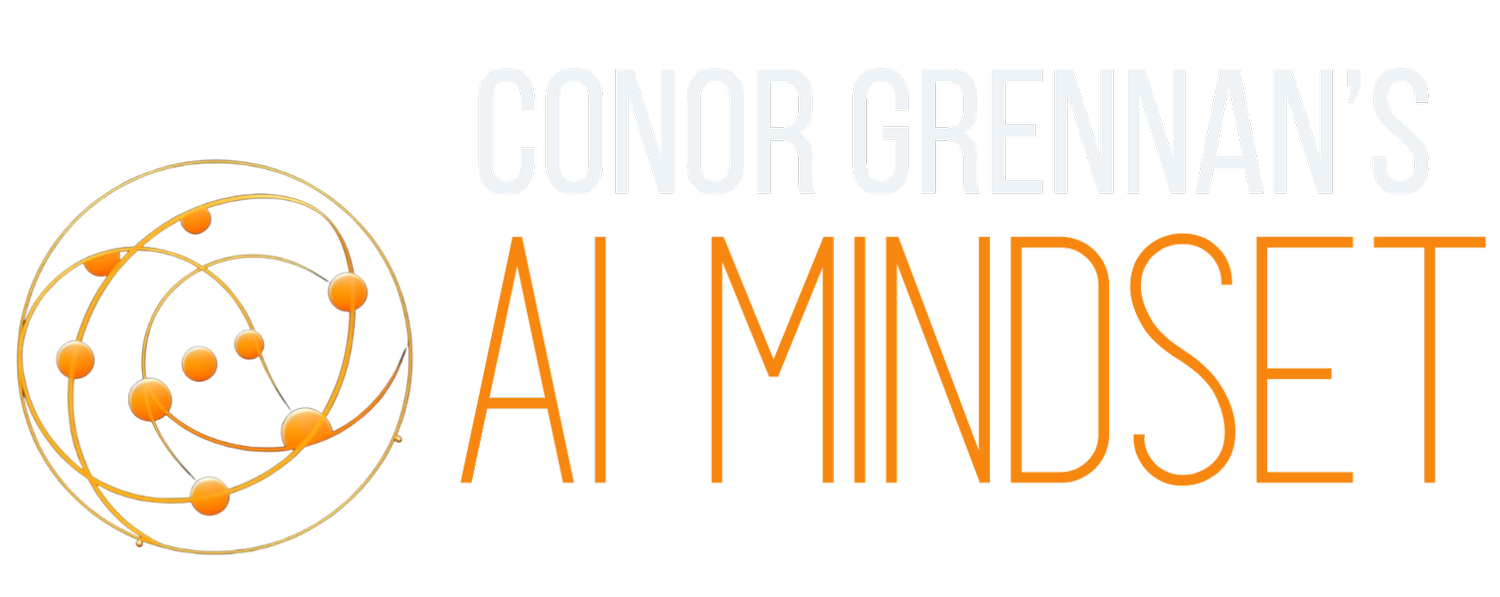Three Secrets Teens Know About Generative AI
When ChatGPT first came out, schools scrambled to ban it. And who could blame them?
Generative AI felt like a plagiarism tsunami, ripping the doors off every classroom in the country. How were teachers supposed to grade anything?
Still, I was determined that my son Finn (9th grade) learn how to use it. I got him a used Macbook and a ChatGPT subscription.
Finn frowned when he saw the ChatGPT text box.
“How does it work?”
“Step one is figuring out how it works,” I told him.
“So kinda like Fight Club.”
“You watched Fight Club?”
“I watched it with you.”
He thanked me for the laptop and went off to experiment with whatever “ChatGPT” was. He emerged two hours later.
“Okay, I think I got it.”
In that space of time, Finn went from never seeing ChatGPT in his life to figuring out use cases so impactful that I now use them in demonstrations. (I’ll share them in the Generative AI Tips.)
Friends, listen to me:
Don’t you dare chalk this up to “Teens are just more tech savvy!”
This has nothing to do with tech savvy.
Teens are doing something REALLY interesting here that is allowing them to crush ChatGPT. It took me months to understand it. But here it is.
three secrets teens know about genAI:
1. expertise can be a mortal enemy
Strangely, it turns out that one of the biggest hurdles to people using generative AI is… their own depth of expertise.
Here’s what I mean:
If you’ve worked at something for a long time, and have gotten very good at it, you have a cognitive bias towards the knowledge you’ve developed.
That bias can hold us back.
We rely on our expertise so completely that it doesn’t occur to us to question what we are sure we know. (That expertise has been responsible for our career success, after all.)
Teens, on the other hand, tend not to have the same kind of profound depth of knowledge that comes from sheer experience (unless it’s about Poke-whatever or Taylor Swift’s flight path.)
They go in with a blank slate. An open mind. They’re learners.
That’s why they can learn so insanely quickly on ChatGPT.
LESSON:
Ask ChatGPT for new approaches within your area of expertise. At first it may not be effective. Keep iterating. Your results will get awesome.
2. I wonder if it can...
Teenagers are terrifyingly comfortable with asking questions that start with the phrase “Hey I wonder what would happen if I…” and include words like “used these fireworks to…” or “tied a rope to the bumper of your car and…”
They push the boundaries of what’s possible.
This approach to life - which gives parents night sweats - is the single best approach to using ChatGPT.
Why?
Because it doesn’t rely on preconceived notions of what we think ChatGPT can do.
Adults LOVE preconceived notions. Preconceived notions allow our brains to automate as much as possible, thus freeing up our prefrontal cortex. That’s usually a good thing. Until it starts holding us back.
Teens, though, are natural boundary pushers. And ChatGPT is magical when its boundaries are pushed.
LESSON:
Put a post-it note on your desk that reads “I wonder if ChatGPT can do this task.” The brain thrives on visual cues. Test ChatGPT on every task you do.
3. Creativity beats Productivity
Most learning is insanely boring. Sorry, but it is.
Think about it - even when some dude is like “Hey you wanna learn how to surf?” the truth is that nobody wants to learn how to surf. We want to be able to surf. Learning is the only path.
ChatGPT cuts down on the time, exhaustion, and pain of learning.
ChatGPT is like Matrixing stuff into your brain. It’s easy and fun and packed with I-Know-Kung-Fu dopamine hits.
Teens gravitate to teachers who make learning interesting and sticky, not to teachers who increase their productivity.
LESSON:
I used to train using only productivity cases. Now I use more creativity. It’s stickier, and thus more efficient.
ChatGPT is great for productivity. But to become an expert, try playing around with it in your free time, on fun tasks. You’ll get better, quicker.
Got kids? Ask them how they’re using it. Or create a safe environment for your kids to experiment. It’ll shock you how good they are.
Then follow their lead. We can be explorers too, friends.
AI NEWS OF THE WEEK
1. All Things Google
I don’t know how to keep up with the Google news. The AI image generator is producing wildly inaccurate historical figures. CEO Sundar Pichai is apologizing for it. It’s a lot, Google.
2. Humane Going Global
Humane, the makers of the AI Pin, have struck exclusive deals to partner with huge telecom companies in South Korea and Japan. This is about app-less operating systems as much as hardware. Big moves.
3. Mistral and Microsoft
French start-up Mistral launched Mistral Large, a new powerful closed source model. And Microsoft is right there to partner with them. Strong foothold into the European market for MS.
Generative AI Tips
As promised, here are some of the case studies Finn figured out on his own.
History
Finn instructed ChatGPT to become a German immigrant arriving in New York. Asked his name (Henrick), his background, everything. Then he walked alongside the immigrant as Henrick described the sights and sounds of 1860’s NYC. He took Finn to his tenement house, then to his first day of work in the meat packing district, and so on.
Biology
Finn asked ChatGPT to make each part of the cell a different Marvel hero, based on its characteristics. Then he told it to make viruses and stuff the Marvel villains - again, attaching similar characteristics. Then he had ChatGPT write a cinematic battle scene.
Hamlet
Finn met Hamlet in a cool Brooklyn cafe and talked to him about how his experiences. “Hey Finn, thanks for meeting up! You need a latte?” “Yeah, great, Hamlet! How’s everything?” “You know, not so great, buddy…” (If you’ve read Hamlet, this should come as no surprise.)
That’s all for today!
Thanks for reading, and share with anyone you think can benefit! We gotta learn together!
See you next time!









